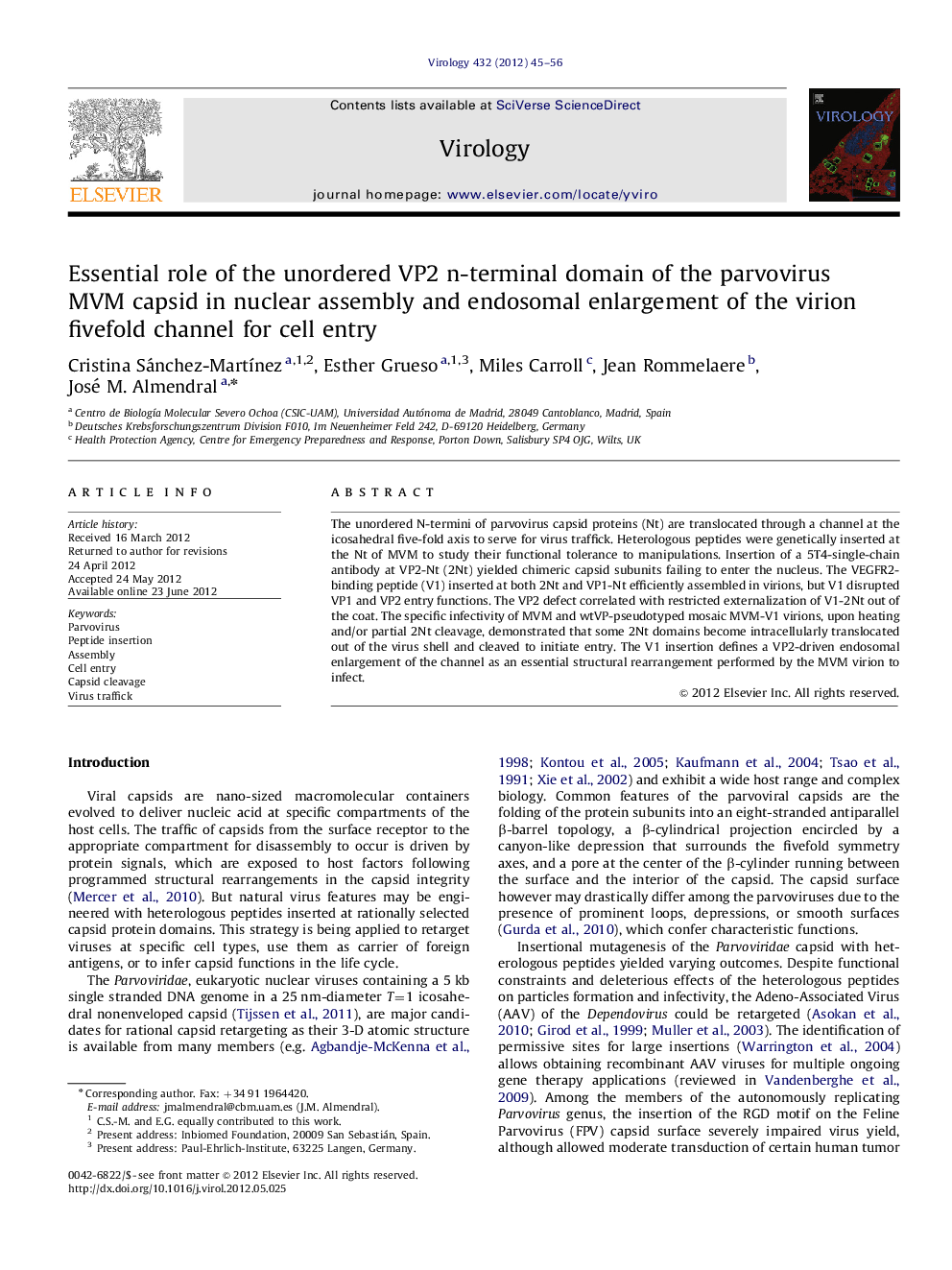| Article ID | Journal | Published Year | Pages | File Type |
|---|---|---|---|---|
| 6141128 | Virology | 2012 | 12 Pages |
Abstract
The unordered N-termini of parvovirus capsid proteins (Nt) are translocated through a channel at the icosahedral five-fold axis to serve for virus traffick. Heterologous peptides were genetically inserted at the Nt of MVM to study their functional tolerance to manipulations. Insertion of a 5T4-single-chain antibody at VP2-Nt (2Nt) yielded chimeric capsid subunits failing to enter the nucleus. The VEGFR2-binding peptide (V1) inserted at both 2Nt and VP1-Nt efficiently assembled in virions, but V1 disrupted VP1 and VP2 entry functions. The VP2 defect correlated with restricted externalization of V1-2Nt out of the coat. The specific infectivity of MVM and wtVP-pseudotyped mosaic MVM-V1 virions, upon heating and/or partial 2Nt cleavage, demonstrated that some 2Nt domains become intracellularly translocated out of the virus shell and cleaved to initiate entry. The V1 insertion defines a VP2-driven endosomal enlargement of the channel as an essential structural rearrangement performed by the MVM virion to infect.
Keywords
Related Topics
Life Sciences
Immunology and Microbiology
Virology
Authors
Cristina Sánchez-MartÃnez, Esther Grueso, Miles Carroll, Jean Rommelaere, José M. Almendral,
